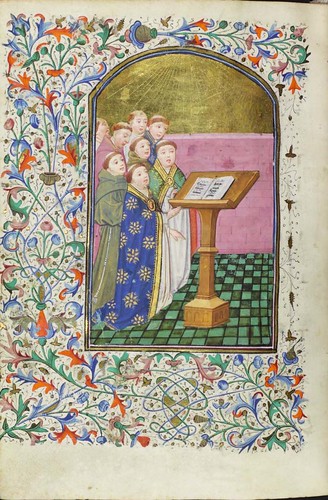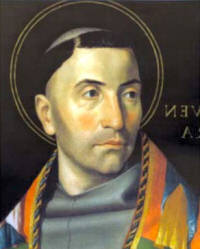Earlier this month, Fr Thomas Kocik of the New Liturgical Movement visited Thomas More College and gave a brilliant presentation of the liturgical movement since its beginnings in the 19th century. I recommend everyone to watch it.
http://vimeo.com/30878796
Somehow condensing what had been a 14-part series in his diocesan magazine into just one hour, he managed to give us the detail of the theology that was driving it. He made it interesting and understandable; as he introduced each new piece of detail, he placed it clearly in the context of the overall aims of the movement thereby making sure that we could see how this contributed to the greater picture of the development of the movement. He did the same in describing the errors: both from the over zealous proponents and reactionary forces who saw themselves as preserving ancient tradition (but were often, it seemed, seeking to preserve a misguided innovation of the previous generation of reformers). This portrayal of extremes was epitomised by his description where on the one hand the reformers sought to emphasise liturgical piety to such an degree that all traditional devotional prayer was discouraged - this is one of the things that lead to the removal of statues and iconoclasm of the post-Sixties period; and on the other the promotion traditional devotions to the degree that they are placed ahead of a genuine liturgical piety in importance. He described in clear terms what the Second Vatican Council said in regard to liturgy and why it was necessary. He went on to say how many of the recommendations were only partially or wrongly implemented, pointing out also aspects that have appeared since the Council for which there appears to be no justification at all. He then presented the current forms of the Mass, Extraordinary and Ordinary into this context.
In offering hope for the future he describe how more recently, and under Pope Benedict XVI especially, we have started to see a move towards what the council was asking for. He emphasised the importance in this of the Oxford Declaration on Liturgy in 1996. This statement was made in the proceedings of a conference at Oxford under the patronage of the the Centre for Faith and Culture (now maintained by Thomas More College of Liberal Arts). The proceedings were edited by the Centre's director, Stratford Caldecott. In calling for a proper reflection of the what the Second Vatican Council had called for in the liturgy, the Oxford Declaration represented an influential turning point and was cited approvingly by the then Cardinal Ratzinger in 1998. It is worth mentioning that the work in this area continues to this day by the Centre and Thomas More College publishes and distributes in the US its journal for faith and culture called Second Spring (to which Fr Kocik contributes). Stratford Caldecott and his wife Leonie also run Thomas More College's annual student Oxford summer programme. With all of this detail, one might imagine that what was given to us could have been dry and difficult to follow for all but the cognoscienti, but this was not the case at all. The material was so well organised and clearly presented that it was always easy to follow. It was particularly gratifying to see so many of our students, many of whom were hearing this information for the first time, reacting so positively to what they heard. In the period of socialising afterwards they crowded around Fr Kocik to ask more questions.
The link through to the summary and video on the Thomas More College page is here.



 Scripture, part of the foundation of joy (part one, part two tomorrow)
Scripture, part of the foundation of joy (part one, part two tomorrow) Here is St Bonaventure (whose picture is shown) from the Office of Readings of Monday Week 5 of the year:
Here is St Bonaventure (whose picture is shown) from the Office of Readings of Monday Week 5 of the year:


